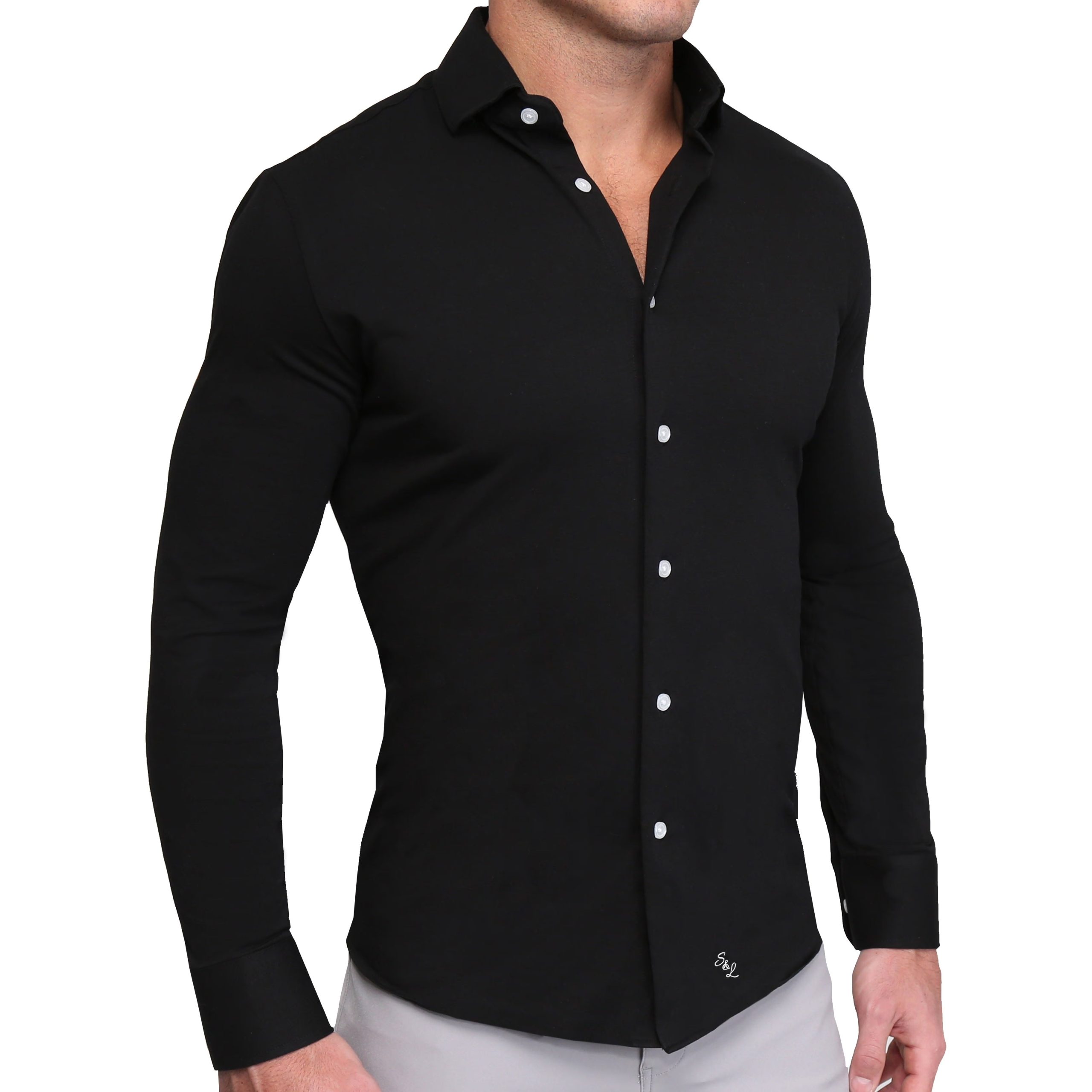Types of Shirt Stains and Their Common Causes
Identifying the type of stain on your dirty shirt is crucial for effective removal. Different stains have varied origins and, hence, require specific treatment. Let’s discuss the most common types of shirt stains and what typically causes them.

Food and Beverage Spills
These are perhaps the most familiar stains we encounter. Common culprits include coffee, tea, red wine, grease, and tomato sauce. Eating or drinking carelessly often leads to these unsightly marks.
Sweat and Antiperspirant Marks
Sweat can cause yellowish stains, particularly around the armpits, due to the interaction with deodorants or antiperspirants. Regular workout sessions or hot weather can exacerbate this issue.
Ink Splatters
Pen leaks or accidental contact with markers can leave a dirty shirt with stubborn ink stains. Office workers or students are particularly prone to such mishaps.
Grass and Mud
Outdoor activities like gardening, sports, or simply playing in a park can result in greenish or brownish stains from grass and mud.
Make-up and Oil
Traces of make-up or body oils can transfer onto shirt collars and cuffs. This is common when dressing in a hurry or changing clothes.
Understanding these common causes helps prep you for the stain removal process. It directs you towards the best way to treat the problem, ensuring your shirts retain their pristine look for a long time.

Pre-Treatment Tips for Stain Removal
Before jumping into the stain removal process, effective pre-treatment is essential to loosen the stain and make the cleaning process easier. Here are some essential tips for treating a dirty shirt before a wash.
Act Quickly
The longer a stain sits, the harder it is to remove. Try to address spills as soon as they happen. This can prevent the stain from setting in deeply.
Identify the Stain
Different stains need different treatments. Look closely to determine the substance causing the stain on your dirty shirt. This will guide your choice of pre-treatment and stain remover.
Blot, Don’t Rub
Gently blot any excess liquid with a clean cloth or paper towel. Rubbing can spread the stain or embed it further into the fabric.
Cold Water Rinse
For many stains, a cold water rinse can help to dilute the stain. Avoid hot water, as it may set some types of stains, making them more difficult to remove.
Test Stain Remover
Before applying a stain remover, test it on an inconspicuous area. This ensures it won’t damage the fabric or color of your dirty shirt.
Use the Right Tools
For delicate fabrics, use a soft-bristled brush. For more robust fabrics, a toothbrush can help work the pre-treatment into the stained area.
Implementing these tips will better prepare you to tackle tough stains and enhance your chances of restoring your shirt to its former glory.

Best Stain Removers for Different Kinds of Stains
Choosing the right stain remover for your dirty shirt is vital for effective cleaning. Each kind of stain demands a specific solution to tackle it properly. Here’s a list of the best stain removers suited for various types of stains:
Food and Beverage Spills
For these stains, enzyme-based detergents work wonders. They break down proteins in food and drink spills. Spot treatments with liquid dish soap can also help dissolve greasy marks.
Sweat and Antiperspirant Marks
Use a pre-treatment with an oxygen-based bleach to target these stains. It helps lift yellowish discoloration without harming fabric colors.
Ink Splatters
Isopropyl alcohol or nail polish remover are go-to choices for ink stains. Gently dab the spot until the ink starts to fade.
Grass and Mud
A heavy-duty laundry detergent can remove these organic stains. Some detergents are specially formulated to deal with grass and mud.
Make-up and Oil
Mineral spirits or a makeup remover that’s oil-free can clear away make-up stains. For body oils, use a detergent with strong degreasing power.
Remember to read labels and follow the instructions on stain removers. Test them on an inside seam or hidden area first. This will ensure that your dirty shirt comes out clean, with colors and fabric intact.

Step-by-Step Guide to Removing Tough Stains from Shirts
Removing tough stains from a dirty shirt might seem daunting, but with a clear, step-by-step guide, you can tackle even the most stubborn marks. Follow these simple steps to effectively clean your shirts and say goodbye to unsightly stains.
Step 1: Address the Stain Immediately
As soon as you notice a stain, act quickly. Time is not on your side with stains; the sooner you deal with it, the better.
Step 2: Identify the Stain Type
Look closely at the stain to identify what caused it. This knowledge will inform your treatment approach.
Step 3: Select the Correct Pre-Treatment
Depending on the stain, apply the appropriate pre-treatment solution. Refer to the earlier section for specific removers.
Step 4: Apply the Stain Remover
Gently apply the stain remover to the affected area. Avoid harsh rubbing that could spread the stain.
Step 5: Let the Remover Work
Allow the pre-treatment to settle in for a few minutes, but don’t let it dry out completely.
Step 6: Wash the Shirt
Wash your dirty shirt as usual, following care labels for temperature and washing machine settings.
Step 7: Inspect Before Drying
After washing, check the stain. If it’s still visible, do not dry the shirt – heat can set the stain permanently.
Step 8: Repeat if Necessary
Repeat the pre-treatment and washing steps if the stain persists. Sometimes, tough stains need a second go.
Step 9: Dry the Shirt Properly
Once the stain is out, dry your shirt according to the care label instructions to prevent damage.
Always remember to wear protective gloves when dealing with strong stain removers or bleach-based products. This will protect your skin from the harsh chemicals. With patience and the right approach, you can restore your dirty shirt to its former unstained glory.
Homemade Stain Removal Solutions
You don’t always need commercial products to tackle a dirty shirt with stains. Homemade solutions can be both effective and budget-friendly. Here are some easy-to-make stain removers using everyday household items:
Vinegar and Baking Soda
Mix equal parts of white vinegar and baking soda to form a paste. Apply it directly to the stain and let it sit before washing as usual. This mix works well for coffee and tea stains.
Lemon Juice
Lemon juice is great for lightening dark stains. Squeeze fresh lemon juice onto the affected area and expose it to sunlight for some natural bleaching action.
Hydrogen Peroxide
Hydrogen peroxide can act as a mild bleach. It’s effective for blood or sweat stains. Apply a small amount to the stain and rinse after a short wait.
Dish Soap and Hydrogen Peroxide
Combine a few drops of dish soap with hydrogen peroxide. This mixture is a powerful agent against tough, greasy stains.
Salt
Salt can lift fresh spills from fabrics. Sprinkle it onto a wet wine stain, for example, and watch it absorb the liquid.
Remember to always test your homemade solution on a small, hidden part of the shirt first. This ensures it won’t cause any damage. With these simple recipes, you can often avoid the stain becoming a permanent part of your dirty shirt.

Caring for Stained Shirts: Washing and Drying Best Practices
Proper washing and drying are critical for maintaining your clothes, especially when you’re dealing with a dirty shirt with stains. Here are some guidelines to ensure the best results:
Sorting Your Laundry
Always sort your clothes before washing. Keep stained shirts separate from other laundry to avoid the transfer of stains.
Choosing the Right Water Temperature
Use cold water for blood and sweat stains to avoid setting them. Warm water works well for greasy stains.
Selecting the Correct Wash Cycle
For heavily soiled shirts, choose a longer, heavy-duty cycle. A gentle cycle is best for delicate fabrics.
Using the Right Amount of Detergent
Follow the detergent instructions. Using too much can leave residue, while too little may not clean well.
Checking Stains Post-Wash
Before drying, ensure the stain is entirely gone. Drying can set the stain permanently.
Drying Stained Shirts
Air-dry stained shirts when possible. If you must use a dryer, use the lowest heat setting.
By following these best practices, you can improve your chances of completely removing stains and extend the life of your dirty shirt.
Stain Prevention: How to Keep Your Shirts Cleaner for Longer
Preventing stains on your dirty shirt can save you time and keep your clothes looking new. Here are practical tips to avoid stains and keep your shirts clean:
Choose the Right Fabrics
Some fabrics resist stains better than others. Pick materials like polyester or treated cotton when possible. They can repel liquids and are easier to clean.
Wear an Apron or Smock
Protect your clothes when cooking or doing messy tasks. An apron or smock can shield your shirt from unexpected spills.
Keep a Stain Remover Pen Handy
A portable stain remover pen can be a lifesaver. Use it to treat fresh stains on-the-go until you can wash the shirt.
Practice Mindful Eating and Drinking
Be cautious when eating or drinking items that could spill. Take smaller bites and sips to avoid drops falling on your shirt.
Apply Protective Treatments
Some products can make fabrics stain-resistant. Consider using a spray-on protector to add an extra layer of defense.
Regular Maintenance
Spot clean collars and cuffs regularly. This helps prevent build-up that can lead to tough stains later.
Proper Storage
Store your shirts in a cool, dry place. This keeps them free from dampness that can cause mold or mildew stains.
By following these steps, you can reduce the risk of stains and keep your shirts clean for a longer time. When stains do happen, refer back to the earlier sections for removal tips. Keeping stains at bay is all about being proactive and ready for accidents before they happen.
Troubleshooting Stain Removal: When to Call a Professional
Sometimes, despite our best efforts, a dirty shirt stain won’t budge. When home remedies and store-bought solutions fail, it’s time to consult a professional. Here’s when and why you should consider professional cleaning services.
Persistent Stains That Resist Home Treatment
If you’ve followed all the steps and the stain remains, a professional may help. Experts have specialized products and techniques that can tackle stubborn stains without damaging your shirt.
Delicate and Valuable Garments
If your dirty shirt is delicate or expensive, it’s wise to avoid DIY methods. Professionals can clean these fabrics safely. They know how to handle garments that require gentle care.
Lack of Time or Tools
You may not have time to treat stains or lack the correct tools. Professional cleaners can save you time and effort. They use industrial-grade equipment for optimal results.
Complex Stains from Unknown Sources
Unsure of where the stain came from? Professionals can analyze and identify the cause. Correct identification often leads to successful removal.
Frequent Staining on Business or Formal Attire
For those with often-stained work clothes, regular professional cleaning can be a good investment. It keeps your formal attire in top condition and ready for use.
When Stains Come With Odors
Some stains leave behind a bad smell. Professional cleaners can remove both the stain and the odor. They can deodorize your shirt, making it fresh and clean.
In these cases, trust your dirty shirt to a reputable dry cleaner or laundry service. Ensure their methods align with your garment’s care label. Always point out the stain and discuss your previous removal attempts. This helps the professional choose the best approach. Remember, their expertise can be the key to salvaging your shirt.